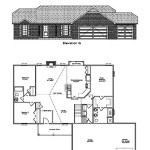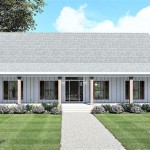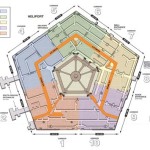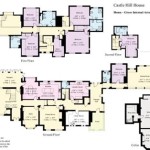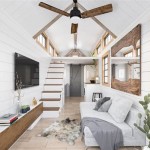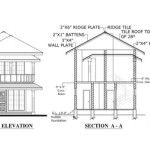Kerala House Plans With Dimensions: A Comprehensive Guide
Kerala house plans, renowned for their aesthetic appeal and climate-responsive design, are increasingly popular choices for homeowners seeking a blend of tradition and modernity. Understanding these plans, including their specific dimensions, is crucial for successful construction and a satisfying living experience. This article provides a comprehensive overview of Kerala house plans with dimensions, covering various aspects from architectural styles to practical considerations.
The architectural heritage of Kerala significantly influences its house plans. Traditional Kerala houses, known as "Nalukettu" and "Ettukettu," feature central courtyards, sloping roofs, and extensive use of locally sourced materials like wood and clay tiles. Modern Kerala house plans often incorporate these elements while adapting to contemporary lifestyles and space constraints. The dimensions of these houses are typically dictated by the plot size, family needs, and budget considerations.
Before delving into specific plan examples, it is important to understand the common dimensional parameters used in Kerala house plans. These include:
- Plot Size: The overall area of the land available for construction. This is a primary factor determining the maximum permissible built-up area.
- Built-Up Area: The total covered area of the house, including walls and balconies. Local building regulations often impose restrictions on the maximum allowable built-up area based on the plot size.
- Room Dimensions: The length, width, and height of individual rooms, such as bedrooms, living rooms, kitchens, and bathrooms. These dimensions should be carefully planned to ensure comfortable living spaces.
- Wall Thickness: The thickness of the walls, which can vary depending on the material used (e.g., brick, concrete, laterite). Wall thickness affects the internal dimensions of rooms and the overall built-up area.
- Roof Height: The height of the roof, which influences the aesthetic appeal of the house and its thermal performance. Sloping roofs, common in Kerala architecture, require careful calculation of height and slope angle.
- Setback Distances: The minimum distance that a building must be set back from the property boundaries. These distances are mandated by local building regulations to ensure adequate space for access, ventilation, and future development.
Key Considerations in Kerala House Plan Dimensions
Planning the dimensions of a Kerala house plan involves several critical considerations that affect both the functionality and aesthetic appeal of the dwelling. These include optimizing space utilization, ensuring structural integrity, and adhering to local building codes.
Space Optimization: Efficient space utilization is crucial in Kerala house plans, particularly in urban areas where land is limited. This requires careful planning of room layouts, minimizing circulation areas (e.g., hallways), and incorporating multi-functional spaces. For example, a living room can be designed to double as a dining area, or a bedroom can include a study nook. The dimensions of each room should be carefully considered to ensure that it is appropriately sized for its intended purpose, avoiding both cramped conditions and excessive, unused space.
Structural Integrity: The structural integrity of the house is paramount, and the dimensions of structural elements such as columns, beams, and foundations must be carefully calculated to withstand the expected loads. This requires the expertise of a qualified structural engineer. The dimensions of these elements are directly related to the overall size and layout of the house, as well as the materials used in construction. A well-designed structural system ensures the long-term stability and safety of the building.
Compliance with Building Codes: All Kerala house plans must comply with local building codes and regulations. These codes specify minimum requirements for setbacks, built-up area, room sizes, ventilation, and other aspects of building design. Failure to comply with these codes can result in delays in obtaining building permits or even legal penalties. It is essential to consult with a qualified architect or building professional to ensure that the house plan meets all applicable regulations. The dimensions of the house, including room sizes and setbacks, must be carefully planned to meet these requirements.
Examples of Kerala House Plans with Dimensions
To illustrate the practical application of dimensional planning, here are a few examples of Kerala house plans with typical dimensions. These examples are intended to provide a general overview and should be adapted to specific site conditions and client requirements.
Small House Plan (Two Bedrooms): A typical two-bedroom Kerala house plan might have a built-up area of 800-1000 square feet. The dimensions of the rooms could be as follows:
- Living Room: 12 feet x 15 feet
- Bedrooms: 10 feet x 12 feet (each)
- Kitchen: 8 feet x 10 feet
- Bathrooms: 5 feet x 7 feet (each)
The overall dimensions of the house would depend on the layout and the inclusion of other features such as a veranda or a dining area. Setback distances would need to be considered when positioning the house on the plot.
Medium House Plan (Three Bedrooms): A three-bedroom Kerala house plan might have a built-up area of 1200-1500 square feet. The dimensions of the rooms could be as follows:
- Living Room: 15 feet x 18 feet
- Bedrooms: 12 feet x 14 feet (master bedroom), 10 feet x 12 feet (other bedrooms)
- Kitchen: 10 feet x 12 feet
- Dining Room: 10 feet x 12 feet
- Bathrooms: 6 feet x 8 feet (attached to master bedroom), 5 feet x 7 feet (common bathroom)
This plan typically includes a larger living area, a separate dining room, and possibly a small study or office space. The dimensions of the house would be significantly larger than the two-bedroom plan, requiring a larger plot of land.
Large House Plan (Four or More Bedrooms): A larger Kerala house plan with four or more bedrooms could have a built-up area of 2000 square feet or more. The dimensions of the rooms would be proportionally larger, and the plan would likely include additional features such as a home theater, a gym, or a guest room.
- Living Room: 18 feet x 22 feet
- Bedrooms: 14 feet x 16 feet (master bedroom), 12 feet x 14 feet (other bedrooms)
- Kitchen: 12 feet x 15 feet
- Dining Room: 12 feet x 15 feet
- Bathrooms: 8 feet x 10 feet (attached to master bedroom), 6 feet x 8 feet (other bathrooms)
- Study/Office: 10 feet x 12 feet
Larger houses often incorporate traditional Kerala architectural elements such as a central courtyard (Nalukettu) or a spacious veranda. The dimensions of these elements would be carefully planned to ensure that they are in proportion to the overall size of the house.
Factors Influencing Dimensional Choices
Several factors influence the dimensional choices made in Kerala house plans. These factors range from practical considerations like climate and budget to aesthetic preferences and lifestyle needs.
Climate: The tropical climate of Kerala plays a significant role in determining the dimensions of houses. High rainfall necessitates sloping roofs to facilitate water runoff. The angle of the roof and the overhangs are carefully calculated to protect the walls from rain and sun. The dimensions of windows and doors are also influenced by climate considerations. Larger windows can provide better ventilation, but they also increase the amount of heat that enters the house. Careful placement of windows and the use of shading devices can help to mitigate this effect.
Budget: The budget is a major constraint in any construction project, and it directly affects the dimensions of the house. Larger houses require more materials and labor, resulting in higher costs. The dimensions of rooms and the overall built-up area should be carefully planned to stay within the budget. Choosing cost-effective materials and construction techniques can also help to reduce expenses.
Lifestyle: The lifestyle and needs of the occupants are important considerations in determining the dimensions of a house. A family with young children may require a larger living area and a dedicated play space. Elderly residents may need larger bathrooms and wider doorways for accessibility. The dimensions of the kitchen should be planned based on the cooking habits and storage needs of the family. The number and size of bedrooms should be determined by the number of family members and their individual preferences.
Utilizing Dimensions for Interior Design
Once the dimensions of the house plan are finalized, they become the framework for interior design. Knowing the precise dimensions of each room allows for effective planning of furniture placement, lighting, and other interior elements.
Furniture Placement: Accurate room dimensions are essential for selecting and arranging furniture. Oversized furniture can make a small room feel cramped, while undersized furniture can look out of place in a large room. Measuring the dimensions of furniture before purchasing it ensures that it will fit comfortably in the designated space. Floor plans, often drawn to scale, are valuable tools for visualizing furniture arrangements and optimizing space utilization within each room.
Lighting Design: Lighting is a crucial aspect of interior design, and the dimensions of the rooms influence the type and placement of lighting fixtures. High ceilings may require pendant lights or chandeliers, while lower ceilings may be better suited for recessed lighting or track lighting. The dimensions of windows and doors also affect the amount of natural light that enters the room. Proper lighting can enhance the ambiance of the room and improve its functionality.
Spatial Perception: Understanding dimensions allows for manipulation of spatial perception. Horizontal lines can visually expand a room's width, while vertical lines can increase the perceived height. Strategic use of mirrors can create the illusion of more space. Color choices also play a role in spatial perception. Light colors tend to make a room feel larger and brighter, while dark colors can make it feel smaller and cozier.
Tools and Resources for Dimensional Planning
Several tools and resources are available to assist in the process of dimensional planning for Kerala house plans. These resources range from online software to professional consultations.
Architectural Software: Architectural software programs such as AutoCAD, Revit, and SketchUp are widely used by architects and designers to create detailed house plans with accurate dimensions. These programs allow for 3D modeling, visualization, and precise measurement of all aspects of the house. They also offer features for simulating lighting and shadow effects, which can be helpful in optimizing the orientation and dimensions of the house.
Online Planning Tools: Numerous online tools are available for creating basic house plans and experimenting with different layouts. These tools are often user-friendly and require no special training. While they may not provide the same level of detail and accuracy as professional architectural software, they can be useful for generating initial ideas and exploring different design options.
Professional Consultation: Consulting with a qualified architect or building designer is highly recommended before finalizing any house plan. A professional can provide expert advice on dimensional planning, structural design, and compliance with local building codes. They can also help to optimize the layout of the house to meet the specific needs and preferences of the client. Professional consultation can save time, money, and potential headaches in the long run.
Conclusion
The dimensions of each element within a Kerala house plan play a critical role in the overall functionality, aesthetic appeal, and structural integrity of the house. Careful consideration of plot size, built-up area, room dimensions, wall thickness, roof height, and setback distances is essential for creating a successful design. By understanding the key considerations, utilizing available resources, and seeking professional guidance, homeowners can ensure that their Kerala house plan meets their needs and expectations.

30 Clever House Plans Ideas For A Comfortable Living Engineering Discoveries Drawing Kerala Design Floor

Best 29 Nice Pictures Kerala Architectural House Plans Design Home Floor

Kerala Style House Design East Facing Home Plan With Elevation And Designs Books

Kerala Style Double Y House Plans Under 1600 Sq Ft For 5 Cent Plots Small Hub

Kerala Home Design House Plans N Budget Models

3 Bedroom Kerala House Plans In 2d 3d

Kerala Style Five Low Budget Three Bedroom House Plans Under 1000 Sq Ft Small Hub

4 Bedrooms Double Floor Kerala Home Design 1820 Sq Ft Bedroom 2 House Plan Be Plans

Five Bedroom Kerala Style Two Y House Plans Under 3000 Sq Ft 4 Small Hub

Architecture Kerala Plan 183 Home Design Floor Plans Delightful For House 4 Bedroom Architectures

